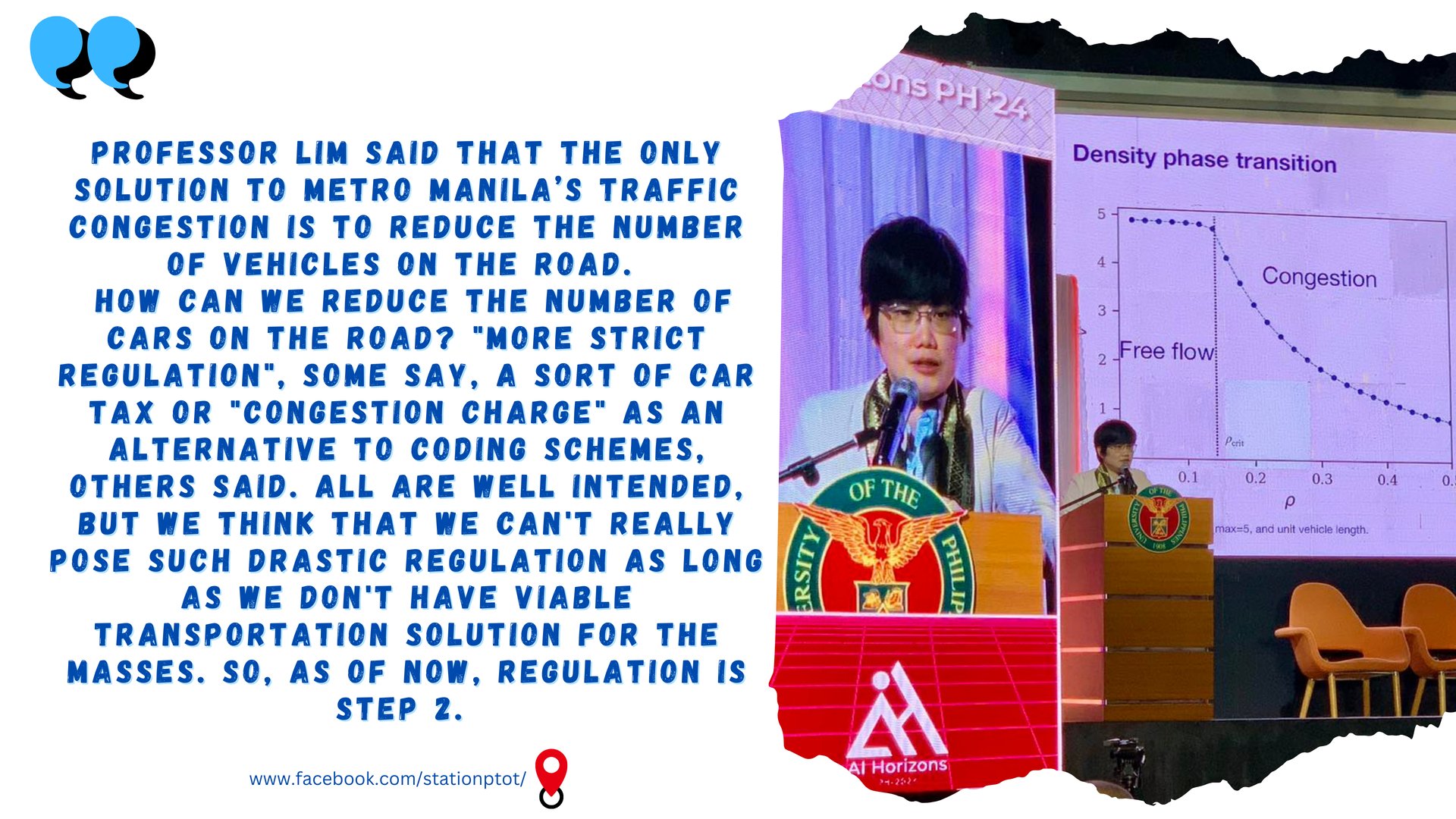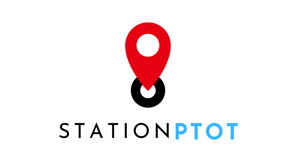
Metro Manila Traffic Congestion and Passenger Density
We explored the reasons why is it so traffic in Metro Manila and the promising solution.
11/26/20244 min read


In the AI Horizons PH '24 conference, Professor May Lim presented a paper about the Metro Manila traffic congestion problem concluding that the only solution to reduce the region's traffic congestion is to reduce the number of vehicles on the road.
Professor Lim might have had an amazing insight on how to possibly deal with the Metro Manila traffic congestion, now, it is our job to implement it. How can we reduce the number of cars on the road? "More strict regulation", some say, a sort of car tax or "congestion charge" as an alternative to coding schemes, others said. All are well intended, but we think that we can't really pose such drastic regulation as long as we don't have viable transportation solution for the masses. So, as of now, regulation is step 2.
"Build more roads, more skyways", others might hint, but that only points the traffic congestion in another road and will eventually be clogged. "Build more trains, mass transportation is what we need", is an acceptable answer, and it is on the way already with a number of railway projects of the Philippine government such as the Metro Manila Subway and the MRT-7 Project. It is just that, these projects, this solution is currently taking a lot of time and money to complete. We need a more viable solution now. So, as of now, mass transportation is in the works. Kind of step 1.5.
Hmm... An immediate solution for reducing cars on the road, it is a conundrum indeed. Mary Ann Reyes written in an article in the Philippine Star (2024) that car travels account for as low as 30 percent only but already constitutes as high as 72 percent of all road traffic, how is this possible? It is all about passenger density, a metric that says how much passenger does a unit of vehicle have, or simply, how effective does a vehicle transport its passengers. For example, a 4-seater sedan has an average passenger density of 4 passengers per 6.58 square meters that approximates to 0.61 passengers per square meter. On the other hand, an average Metro Manila's public utility bus's (Victory Liner) passenger density is 1.55 passengers per square meter, a modern jeepney's (Hino) passenger density is approximately 2.52 passengers per square meter. Maybe a little tweak in calculations for the exact numbers but the point is public utility vehicles pose at least 3 times the efficiency in transporting passengers in terms of passenger density.
This means, if we can capitalize the inherent good passenger density count of Public Utility Vehicles, we can transport the same number people with less vehicles. Thus, problem solved, less vehicles on the road. So, no more traffic, right? Not quite. The real problem starts with, how can we encourage people, people with private vehicles, to use the public transportation system? This goes back to the proposed solution number 1, regulation. But we think, it's a bit dictatorial and hard to implement that drags a lot of flak. Rather, we suggest that we look at why those people, people with private vehicles, don't use public transportation instead. From our own experience, the answer is, it is because our public transportation is really, really hard to use.
Our public transportation is really hard to use, it is inconvenient, crowded, insecure and unreliable at times especially during rush hours. That is from the perspective of an average passenger. From the perspective of the government, public transportation is that way, because there are simply too many people in Metro Manila. Either way, that doesn't change the state of our public transportation system, and that is it is just really hard to use. So, we propose, that if we can drastically improve the passengers' experience in using public transportation, we can shift the culture of transportation in Metro Manila in ways that benefits all. And that is for as much people as possible to be using the public transportation system! Eureka! Problem solved! Not quite, again, still there. Better yet, problem identified!
Now, that we have seen our core and true problem, how can we start of address it? How can we actually start with step 1? Here at Station PTOT, we believe, we can start improving the public transportation using technology, technology that has already risen and is rising day by day, the ride-hailing platforms! Grab, Angkas, Joyride, and the others have become testaments that the commuters of Metro Manila are ready for a shift on how commute is done. And that is digitally! We propose, as step 1, that we digitalize public transportation system, specifically modern jeepneys. The prevalence, size, and bias of Metro Manila commuters to use modern Jeepneys over traditional Jeepneys is a good point to start. Good thing we have Station PTOT, because that is what we are trying to do now!
Here at Station PTOT, our goal is to integrate modern Jeepneys transportation to mobile platforms such as the Grab, Angkas, and Joyride Apps. We call it the PTOT Apps that is composed of PTOT Commute (for passengers) and PTOT TSP (for drivers). Our goal is to address some quirks of modern Jeepneys making it more accessible and more comfortable to use in hopes that we can encourage the use of public transportation more and more. That's our take.
All in all, solving the traffic congestion problem of Metro Manila is a "short" 2-ish steps. Step 1, make current the public transportation system more comfortable to use. Step 1.5, make more public transportation systems like railways. And step 2, heavily regulate the use of private vehicles to further move transportation solutions from private to public transportation. And tada! We have made our thesis on how to address the Metro Manila traffic congestion, the question now is, how to actually start with step 1. Here at Station PTOT, we hope we can be that answer and that you can support us in doing so.
Happy commuting, mga ka-PTOT!
#StationPTOT
#PandPTransportationOnTime
References:
Reyes, M. a. L. (2024, April 12). Solution to MM’s traffic woes. Philstar.com. Retrieved November 27, 2024 retrieved from https://www.philstar.com/business/2024/04/13/2347216/solution-mms-traffic-woes
Newsbytes.PH. (2024, October 24). Newsbytes.ph. Retrieved November 27, 2024 retrieved from https://www.facebook.com/photo.php?fbid=1079598897508608&id=100063755247247&set=a.716230127178822
Metro Manila Traffic Congestion and Passenger Density
Empowering drivers and enhancing passenger experiences daily.
Connect with us
START NOW
info@stationptot.com
+639562357879
© 2024. All rights reserved.


(02) 8812-9644
Connect TO OUR SOCIALS
